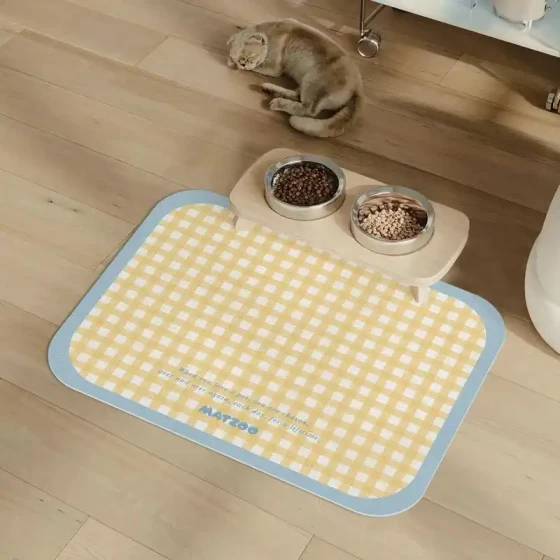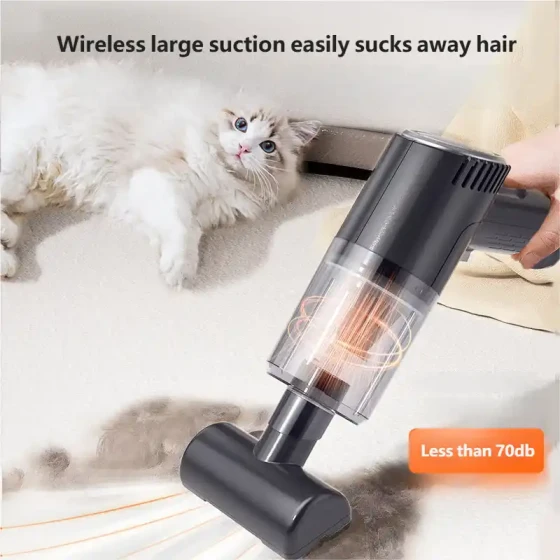Mortality Rate of Female Cats After Spaying_Surgical Risks and Survival Rate Comprehensive Analysis
Female cat spaying, also known as ovariohysterectomy, is a common and relatively safe routine procedure. Studies indicate that for healthy cats, the overall mortality rate of spaying surgery is very low, around 0.03% to 0.05%, with some studies reporting even lower rates, closer to 0.01%. This is comparable to the risk level of human gynecological surgeries. Although the risk is extremely low, any surgical procedure carries some risk of complications. By understanding these risks and ensuring proper pre- and post-surgery care, the safety and health of your cat can be maximized.

Why Spay Female Cats? Beyond "Cutting Scallions"
Spaying is an essential part of responsible pet ownership, and it offers numerous health and behavioral benefits for female cats:
- Prevents Reproductive System Diseases: Unspayed female cats face an increased risk of serious reproductive diseases like pyometra (a life-threatening uterine infection), ovarian cysts, and uterine tumors. These conditions are costly to treat and cause significant suffering. Spaying before the first heat cycle can also dramatically reduce the risk of mammary tumors.
- Improves Behavioral Issues: Female cats in heat tend to vocalize loudly and excessively, often referred to as "calling spring." These noisy behaviors can disrupt your household, affect your cat's appetite, and make her irritable. After spaying, your cat will no longer experience heat cycles, which means these behavioral issues disappear, leaving her calmer and easier to manage.
- Prevents Accidental Pregnancies and Stray Cats: Without spaying, female cats can become pregnant multiple times a year, contributing to the growing stray cat population. Spaying is a responsible way to control the cat population and ensure that no more unwanted kittens are born.
- Extends Lifespan: Spayed cats tend to live longer than unspayed ones. This is primarily due to the reduced risk of reproductive diseases and the absence of the health risks associated with heat cycles and unplanned pregnancies.
Surgical Risks: Low Mortality, But Precautions Are Necessary
Though the mortality rate is extremely low, it’s important to understand the potential risks associated with female cat spaying surgery:
- Anesthesia Risks: As with any surgery requiring general anesthesia, there is always a risk of adverse reactions. Cats tend to have a slightly higher risk of anesthesia complications compared to dogs. However, modern anesthesia methods are highly advanced, and preoperative exams, such as blood tests and health screenings, help ensure safe anesthesia protocols.
- Surgical Complications: While rare, potential complications include:
- Bleeding: There may be some bleeding during or after the surgery, especially if the ligaments are not tied off properly.
- Infection: Infection can occur at the incision site or within the abdominal cavity. Following strict sterile techniques and proper postoperative care can minimize this risk.
- Wound Reopening: Vigorous licking or activity after surgery may cause the wound to open, leading to delayed healing.
- Ovarian Remnants: In very rare cases, small pieces of ovarian tissue may remain, causing continued heat cycles.
- Internal Injury: Damage to internal organs, though extremely rare, is a potential risk during surgery.
How to Maximize Safety and Minimize Risk: Pre- and Post-Surgery Care
Proper preoperative preparation and diligent postoperative care are key to ensuring a successful recovery for your cat.
Preoperative Preparation:
- Timing: The ideal age for spaying is generally between 6-8 months, before the cat reaches sexual maturity. This reduces the surgical risk and promotes faster recovery. Cats in heat should generally not undergo surgery, as engorged reproductive organs can increase bleeding risk.
- Preoperative Exams: Comprehensive preoperative exams are crucial to assess your cat's health. This may include blood tests, biochemical profiles, and coagulation assessments. Older or less healthy cats may require additional tests.
- Fasting and Water Restrictions: Cats should fast for 8-12 hours before surgery to reduce the risk of vomiting during anesthesia, which could lead to aspiration pneumonia. Kittens may have shorter fasting times to prevent hypoglycemia.
- Prepare Supplies: Prepare a comfortable environment for recovery, including a cat carrier, soft bedding, an Elizabethan collar (to prevent licking), and disposable pads.
Postoperative Care:
After surgery, your cat will need a safe, calm environment to recover fully. Pay close attention to the following:
- Warmth and Observation: Cats may feel cold after surgery, so make sure to provide warmth using blankets. Monitor her temperature, mental state, and breathing closely for any signs of complications. Early post-op lethargy and reduced appetite are common, but should improve within 12-24 hours. If symptoms persist, contact your vet immediately.
- Limit Activity: Restrict your cat’s activity to prevent excessive movement, which could lead to wound reopening. Keep her confined in a small, quiet space where she can rest.
- Wound Care and Protection: It's vital to prevent your cat from licking her incision. An Elizabethan collar or a surgical suit can help prevent this. Licking can introduce bacteria and delay healing.
- Diet Management: Start with small amounts of easily digestible food after fasting. Gradually return to a regular diet once your cat shows no signs of vomiting. Avoid greasy or irritating foods to promote optimal healing.
- Monitor Urination and Defecation: Post-surgery, your cat may experience a delay in urination or defecation. If your cat hasn’t urinated or defecated within 24-48 hours, contact your vet.
- Medication: Administer pain relief and anti-inflammatory medications as prescribed to keep your cat comfortable and prevent infection.
- Follow-up: Bring your cat in for follow-up appointments, as recommended by your vet, to monitor healing and remove stitches.
Enhance Your Cat’s Well-being and Hygiene Post-Surgery
Spaying offers numerous long-term health benefits, but it’s also essential to prioritize your cat’s well-being during her recovery. Engaging her with stimulating cat toys(Click to view) can help keep her entertained, alleviate stress, and improve her mood as she heals. These toys not only offer fun but also provide mental stimulation, keeping her active and content throughout the recovery period.
Equally important is ensuring a clean and comfortable space for your cat. Changing her cat litter box regularly (Click to view) is a key part of maintaining her hygiene. A clean litter box reduces the risk of infection and ensures your cat feels at ease in her surroundings while she heals. By providing these small comforts, you’ll help your cat recover smoothly and feel her best!
Frequently Asked Questions
1. Is the mortality rate high after female cat spaying?
The mortality rate is very low—about 0.03% to 0.05%. With modern anesthesia and preoperative exams, the risks are minimal.
2. How long does recovery take after female cat spaying?
Most cats can return home the same day. Recovery typically takes 7-10 days for full healing, and activity restrictions should be maintained during this time.
3. Will my cat gain weight after spaying?
Spaying can lead to weight gain in some cats due to hormonal changes, but this can be managed through a proper diet and regular exercise.
4. Will spaying change my cat’s personality?
Most cats become calmer and less irritable after spaying, as they no longer go into heat. This often leads to a stronger bond between you and your cat.
5. Does my cat need to wear a surgical suit after spaying?
Yes, wearing an Elizabethan collar or surgical suit prevents licking and scratching, which could lead to infection or wound reopening.
Summary
Female cat spaying is a safe and beneficial procedure that not only prevents reproductive diseases but also helps improve behavior and extend lifespan. While there are low risks associated with the surgery, proper preoperative and postoperative care can minimize complications and ensure a smooth recovery. Spaying also contributes to responsible pet ownership and helps control the stray cat population.
By keeping your cat entertained with toys and ensuring a clean, comfortable environment, you’ll be supporting her well-being both during recovery and in the long term.


-560x560.webp)


